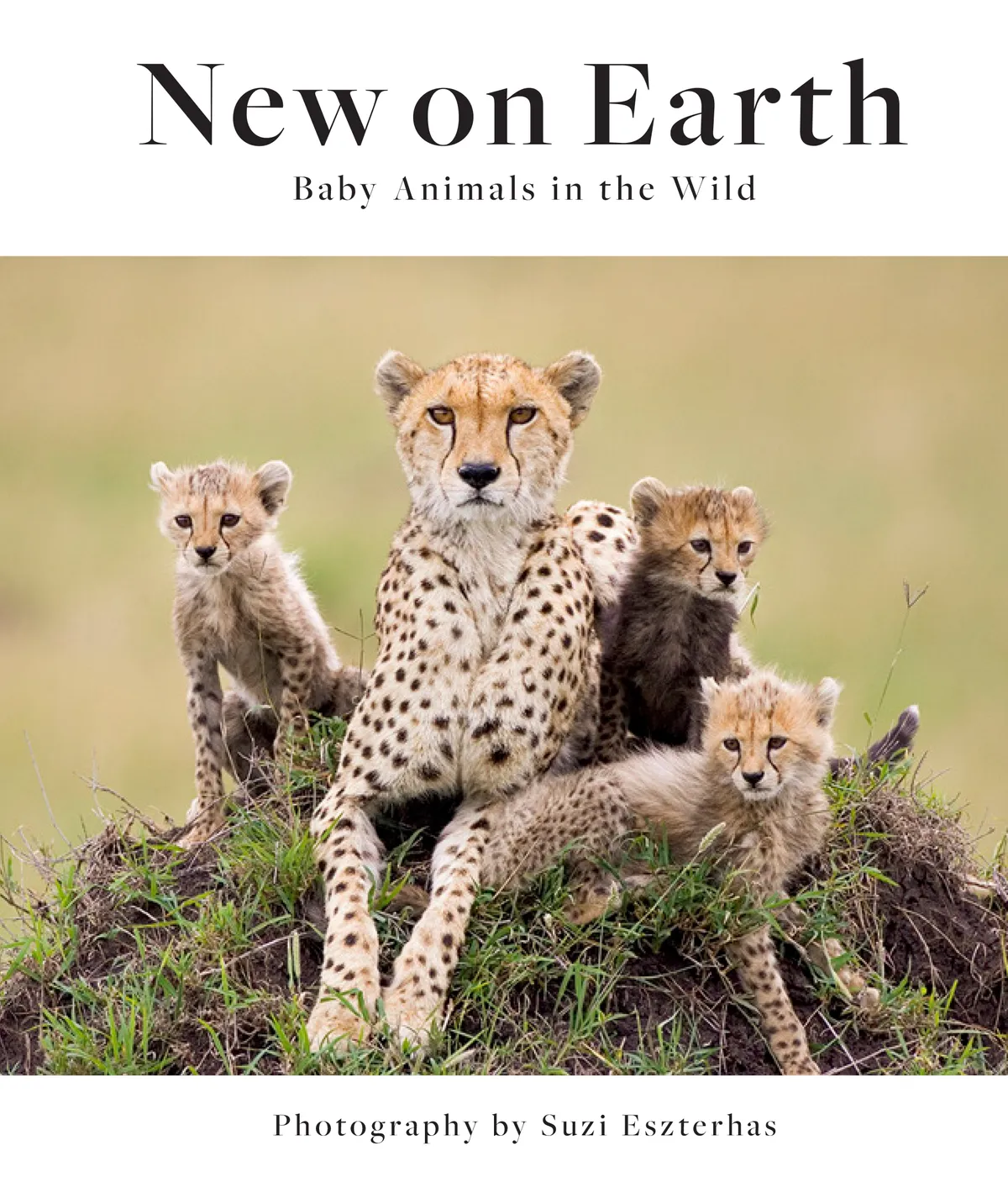About New on Earth: Baby Animals in the Wild
For the last twenty years, Suzi Eszterhas has dedicated her life and her work as a wildlife photographer to capturing the family lives of wild animals throughout the world, focusing particularly on endangered species.
Often spending weeks, months, or even years with a single animal family, she has photographed many unique moments in the lives of young animals. New on Earth is a collection of her most spectacular photographs—from groundbreaking images of tiger cubs in their den in India, to newborn cheetahs on the African savanna, to brown bear cubs seeing the world for the first time in the Alaskan wilderness.
About Suzi Eszterhas
Suzi Eszterhas is an internationally recognized wildlife photographer whose work is published in books, magazines, and newspapers all over the world, including Smithsonian, Time, BBC Wildlife, New York Times, and others. One of the leading female wildlife and conservation photographers working in a male-dominated field, she has published eighteen children's books and two photography books.
She works to raise money and awareness for various conservation organizations. Her books, prints, and photo tours have raised over $200k for conservation groups to date. She is the founder and director of Girls Who Click, a nonprofit organization dedicated to encouraging young women to enter the male-dominated field of nature photography.
View more images by Suzi Eszterhas:
To view the images as a slideshow, click on the arrows in the top right hand corner of the photos below.

My experience meeting Kabatwa, and her twins Isango Gakuru and Isango Gato, was one of the most magnificent moments of my career. Twins among any of the great apes are exceedingly rare.

My biggest challenge working at a wild tiger den in India was getting the cubs to accept my presence. Whereas mom was very relaxed around people, her cubs had never seen a human.
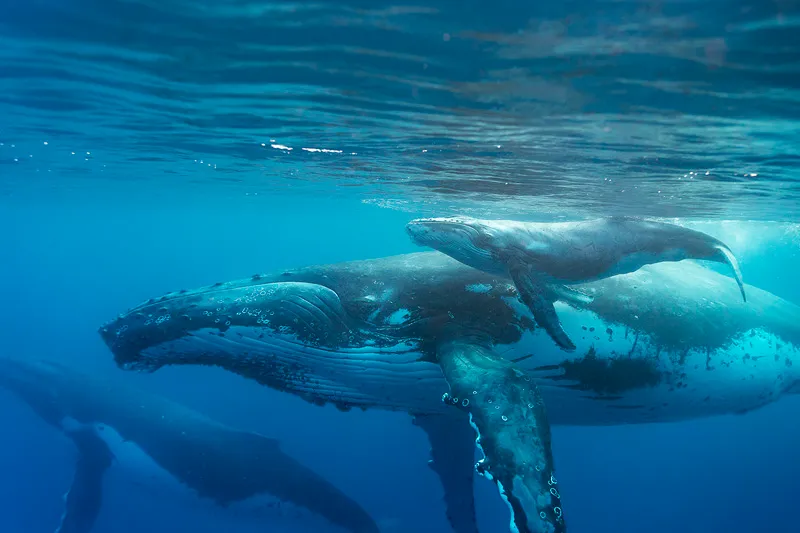
It is hard to put into words how it feels to swim with an intelligent 40-ton mammal and its newborn. Being in the water with something so large and strong, and yet so friendly, is truly a spiritual experience.
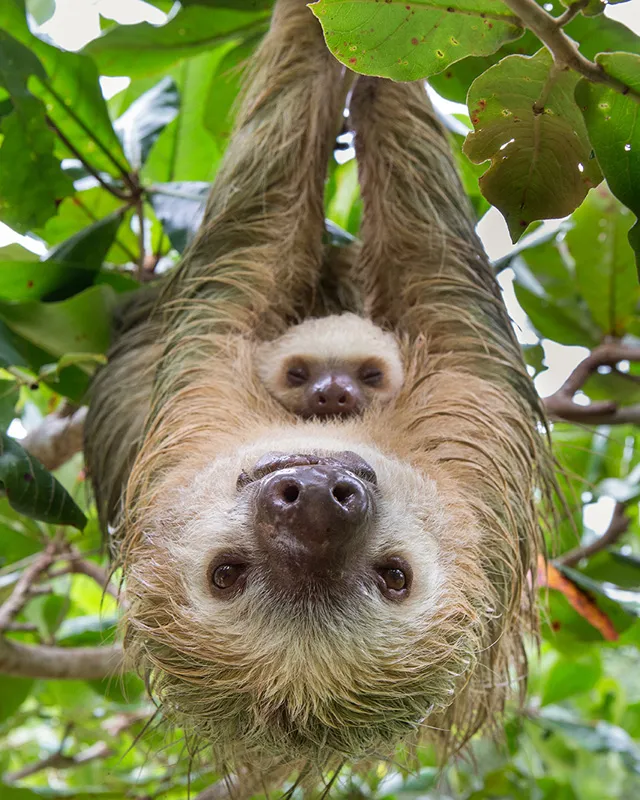
This sloth mom and baby had lost their home tree to logging, and were rescued and rehabilitated by a local sloth sanctuary. I took this photo shortly after they were released back into the wild, in an area permanently safe from logging and other forms of deforestation.
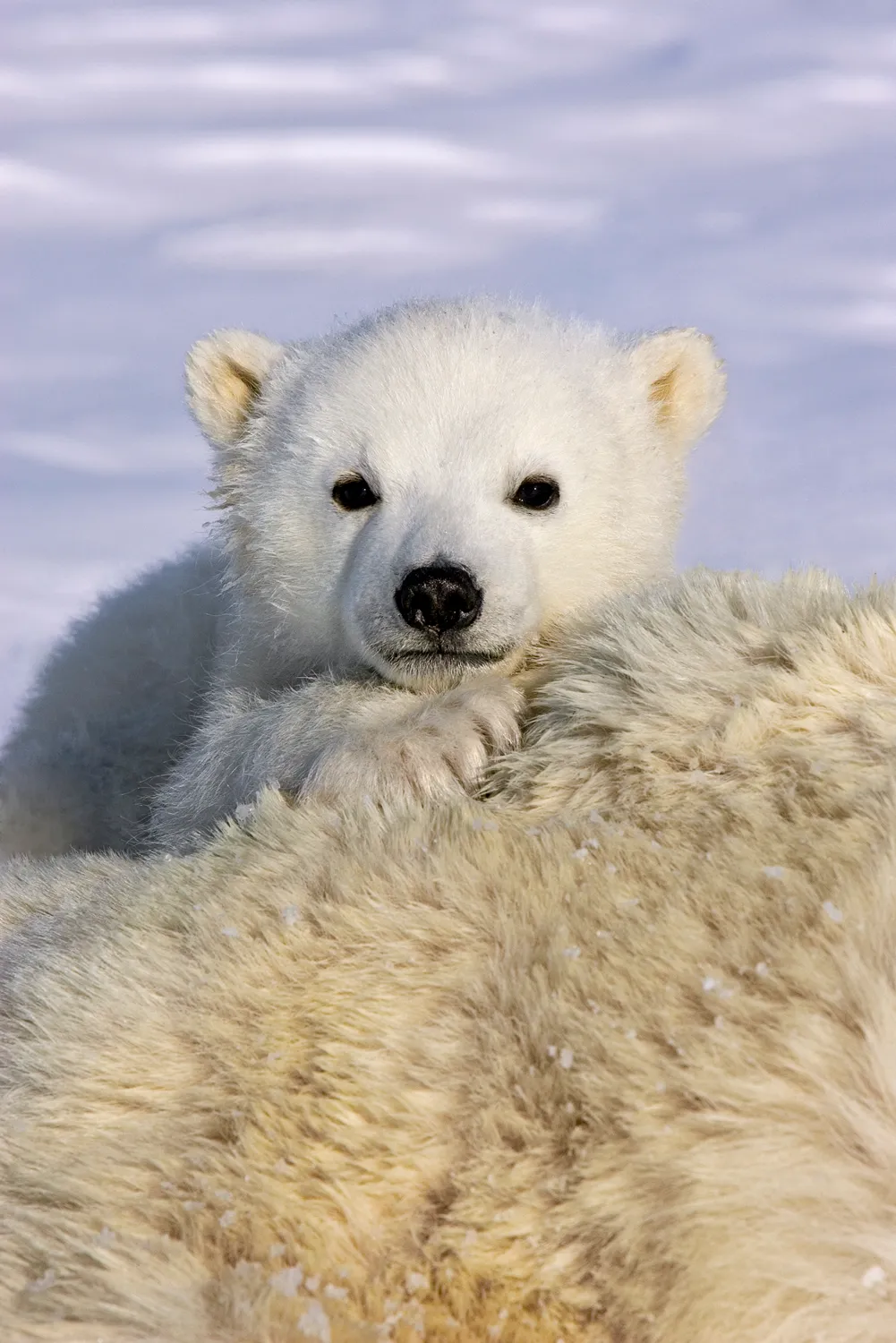
In Arctic Canada I shadowed a scientist collecting data on the effect of climate change on polar bears. He had tranquilised mom to safely weigh her and take blood, hair, and fat samples. Her precious cub climbed on top of her for safety.
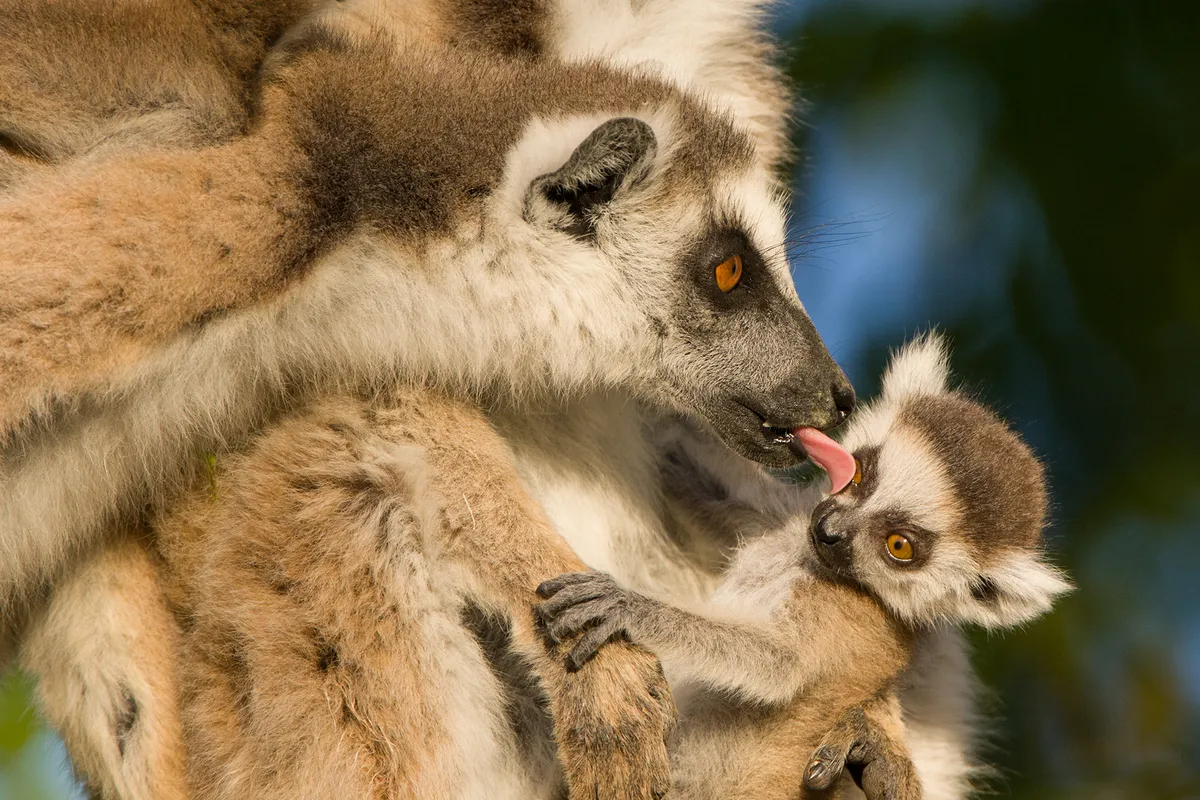
In the photo, a ring-tailed lemur mom is holding her baby while another adult female grooms him. Baby appears less-than-thrilled. The look on his face is priceless.

When it comes to cute baby animals, it’s hard to top otter pups, as demonstrated by this little guy in Monterey Bay, California. His natal coat is warm, fluffy, and buoyant. He spends the majority of his day sleeping on mom’s belly wrapped in her arms, or getting groomed.
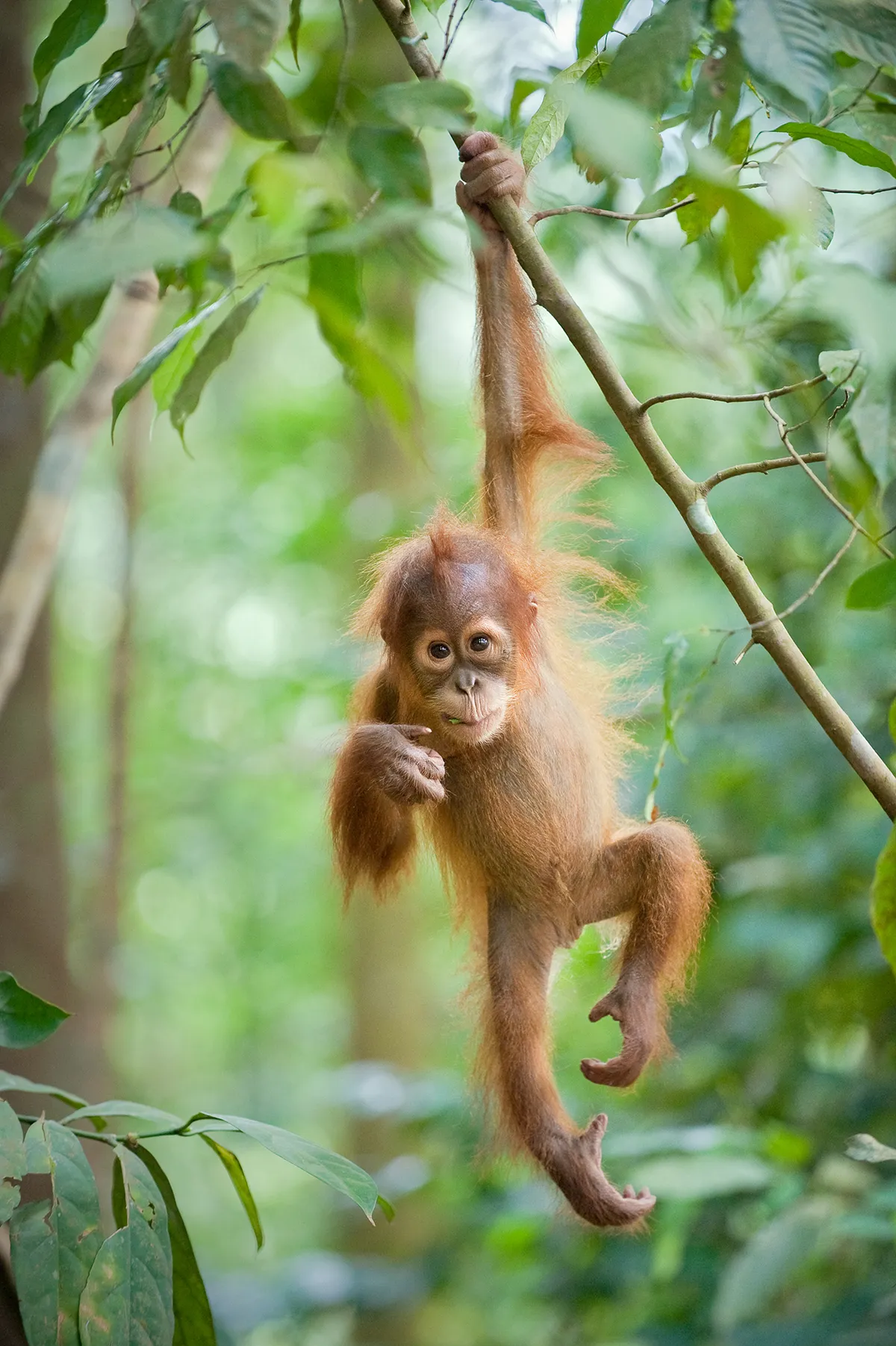
This one and half-year-old Sumatran orangutan is having fun dangling and spinning in Gunung Leuser National Park. Orangutans are critically endangered due to deforestation from the palm oil industry. I am proud to serve as an ambassador for the Sumatran Orangutan Society.

In this photo, baby is grabbing mom’s nose, which made me laugh out loud because the species is named for its schnoz: a “proboscis” is a long nose belonging to a mammal. The reason these monkeys have such big noses is sexual selection, i.e., females think it’s sexy.

In the golden morning light of Kenya’s Maasai Mara National Reserve, a lion cub meets her dad for the first time. The cub in the photo regarded her father for a few minutes, almost shyly, before climbing up. Her raised paw shows she was hesitant. She needn’t have worried—dad gave her a big sniff of approval.
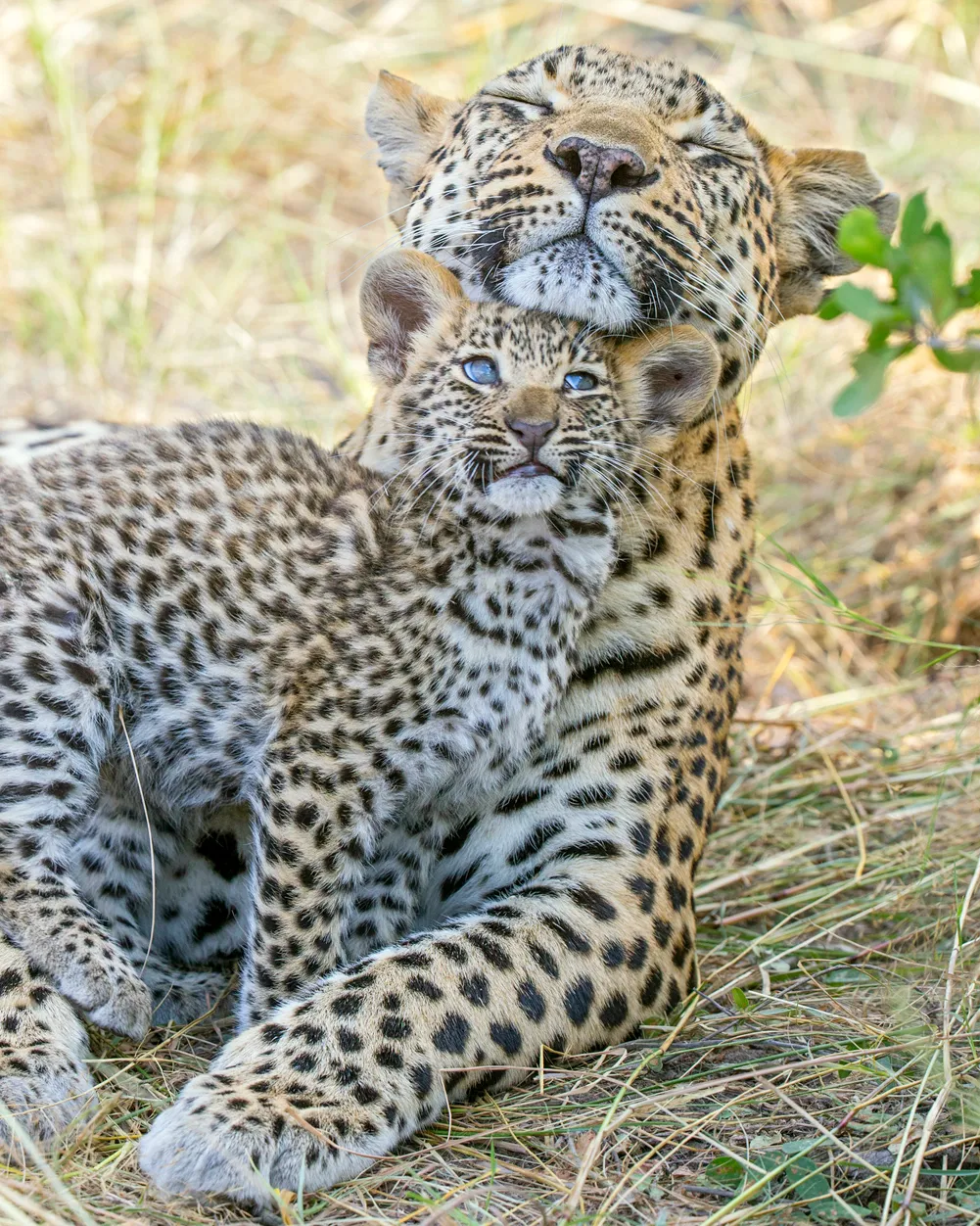
Here, a leopard cub rubs up under mom’s chin in what I’ve come to know as the big cat nuzzle. It’s very common behavior, but among leopards you’ll only ever see it between a mom and her cubs because they’re otherwise solitary.
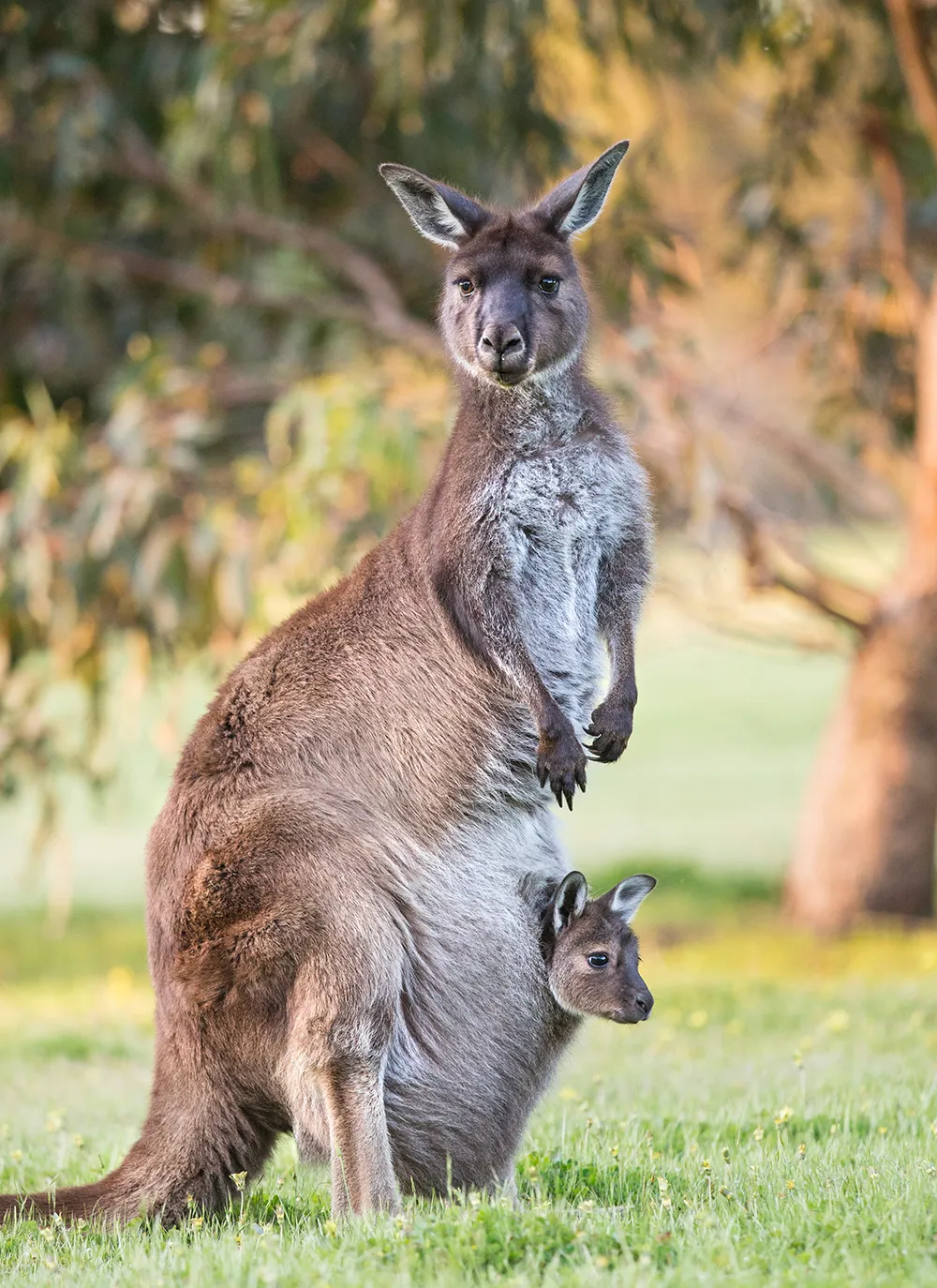
At birth, kangaroo joeys are the size of a grape; pink, hairless, and blind. They live exclusively inside mom’s pouch for the first four months. This joey is eight months old and while he’s still fond of the pouch, he’s spending longer periods of time outside.
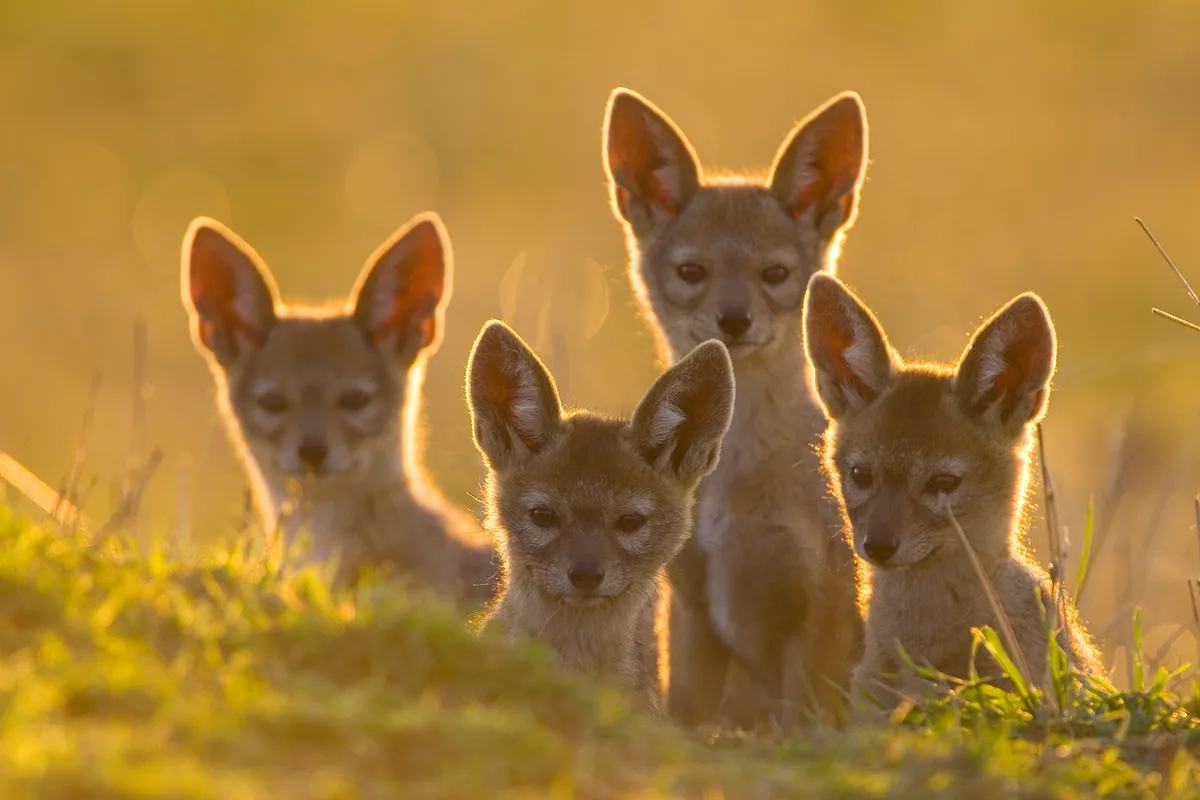
When these jackal pups reach a year of age, they’ll go off to find their mate for life and start a family of their own. Something really special about jackal families is that grown pups don’t always leave. Sometimes they stick around and help mom and dad raise the next season’s litter.

I’ve seldom seen triplet brown bear cubs; singles and doubles are far more common. It was June, and mom was looking to cool off. At first the cubs, who were about five months old, followed her in, then quickly clambered onto her back as they began to submerge.
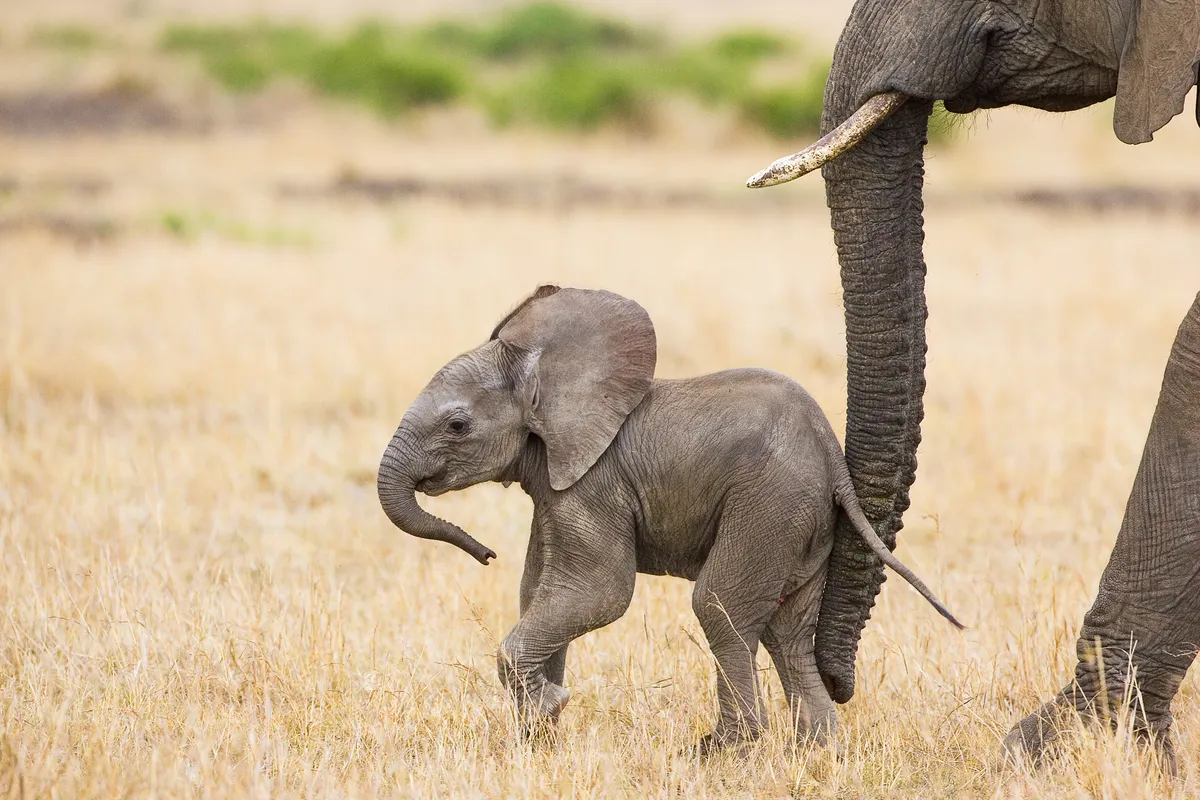
Mother elephants use their trunks to communicate with their calves, offering reassurance or, in the case of this one-month-old in the Maasai Mara National Reserve, simply moving baby along. African elephants live in matriarchal societies, and the bond between mom and calf is one of the strongest in the animal kingdom.
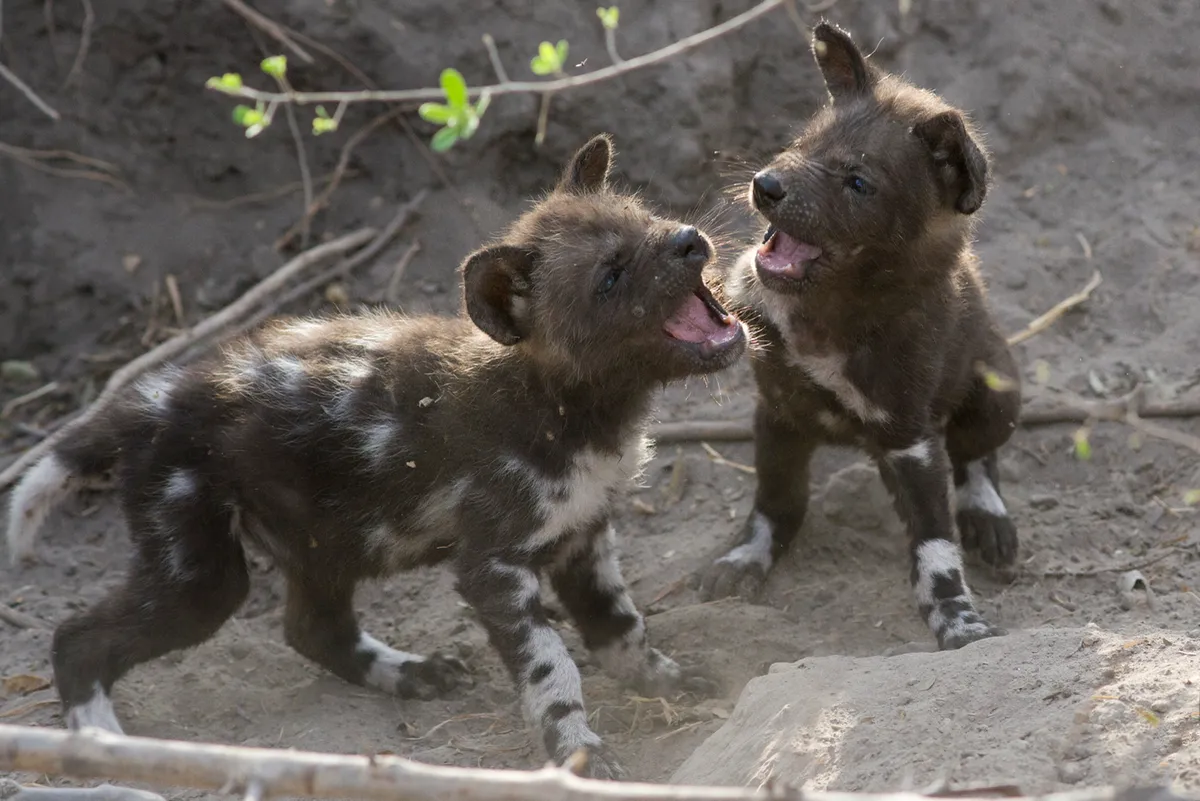
African wild dogs live in packs and are incredibly social, which means pup play is pretty much nonstop. They’re constantly snuggling each other, jumping on each other, or exploring together in a small group. They’re quite fun to photograph.

Cheetah cubs are among the most playful of all mammals, which means their moms are among the most tolerant. By pouncing on mom’s head, this eight-week-old cub is improving her hunting skills and coordination, and building strength. But I think play is also emotional—I’ve seen so much joy in baby animal play.
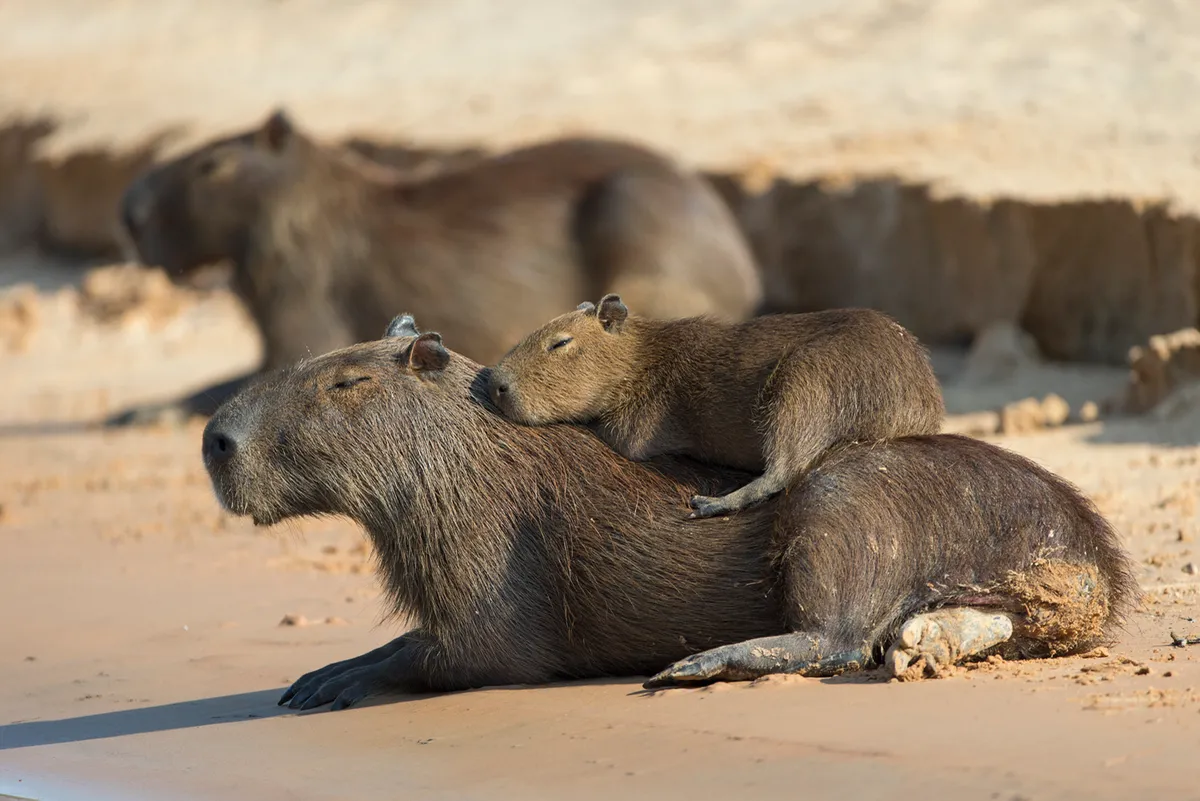
For capybara babies, it’s typical to lay on or beside mom while napping. And it doesn’t even have to be mom: Capybaras live in groups and practice alloparenting, a system where adults other than the parents help raise the young.
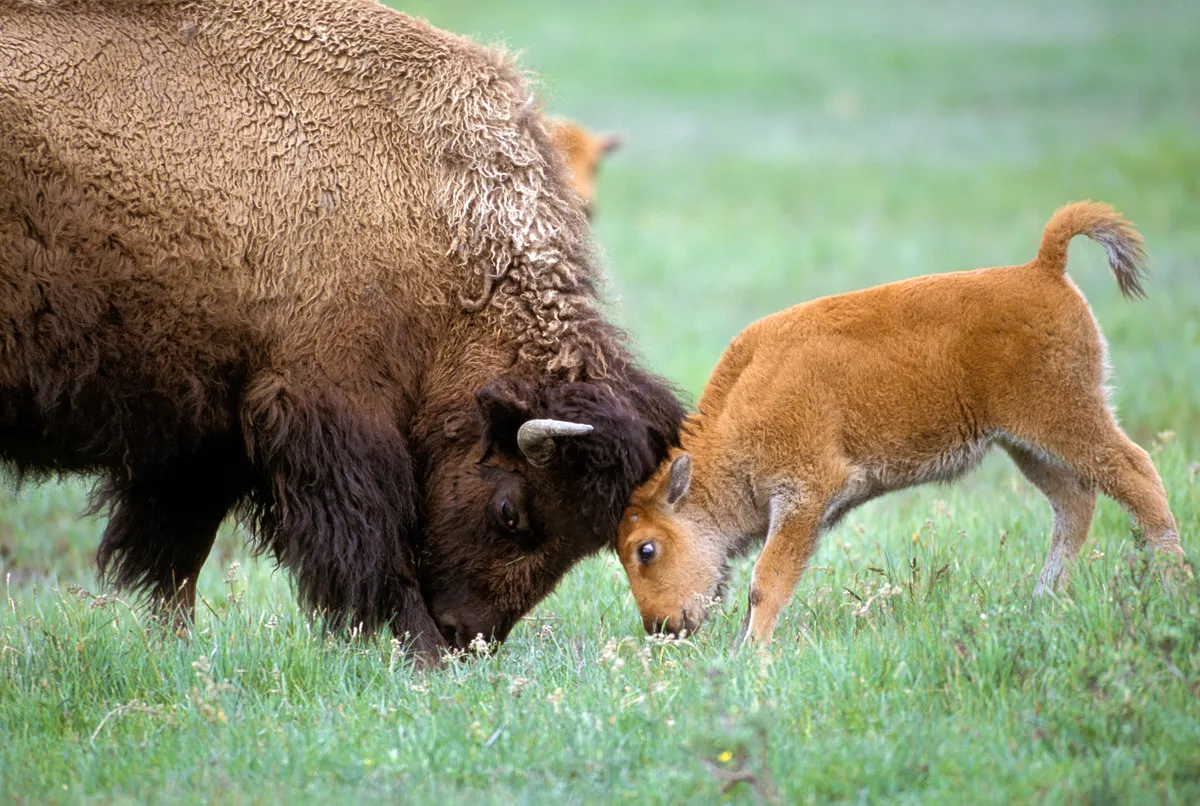
With baby-animal play, the parents don’t always appear to appreciate the encounter. But many, like this female bison in Yellowstone National Park in Montana, clearly enjoy it. Mom went head-to-head with baby for several minutes, much to my delight.

While working with a bat-eared fox family, I observed some fascinating behavior: The fathers are just as involved as the mothers in raising their young. Pictured here is dad, snuggling his two-week-old pups. I’ve since learned that highly-engaged fatherhood is typical among canine species, including jackals and coyotes.
